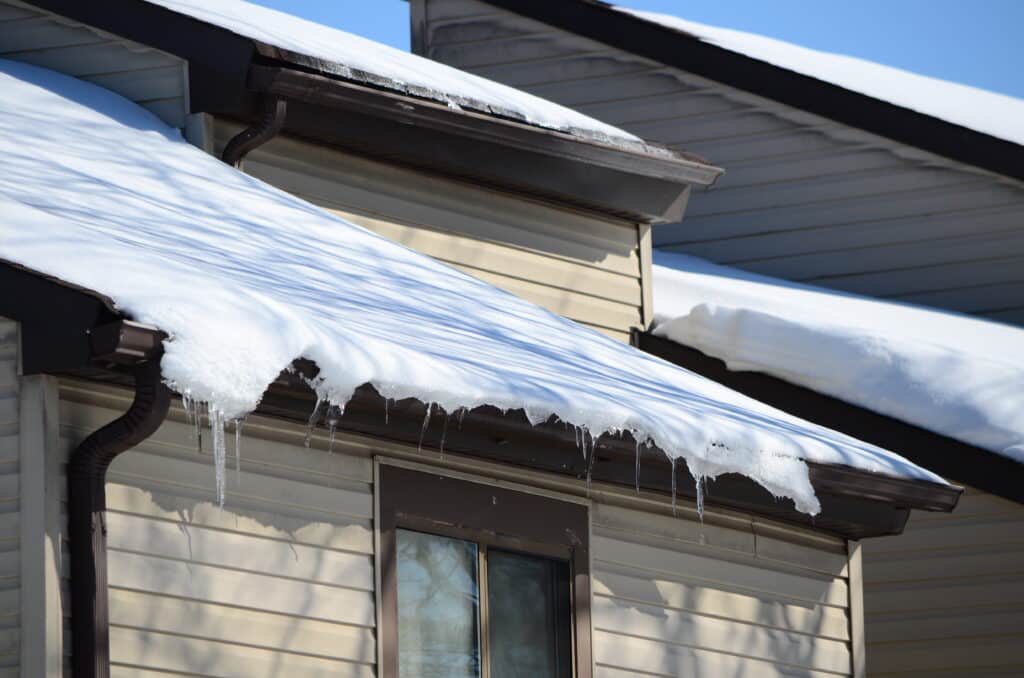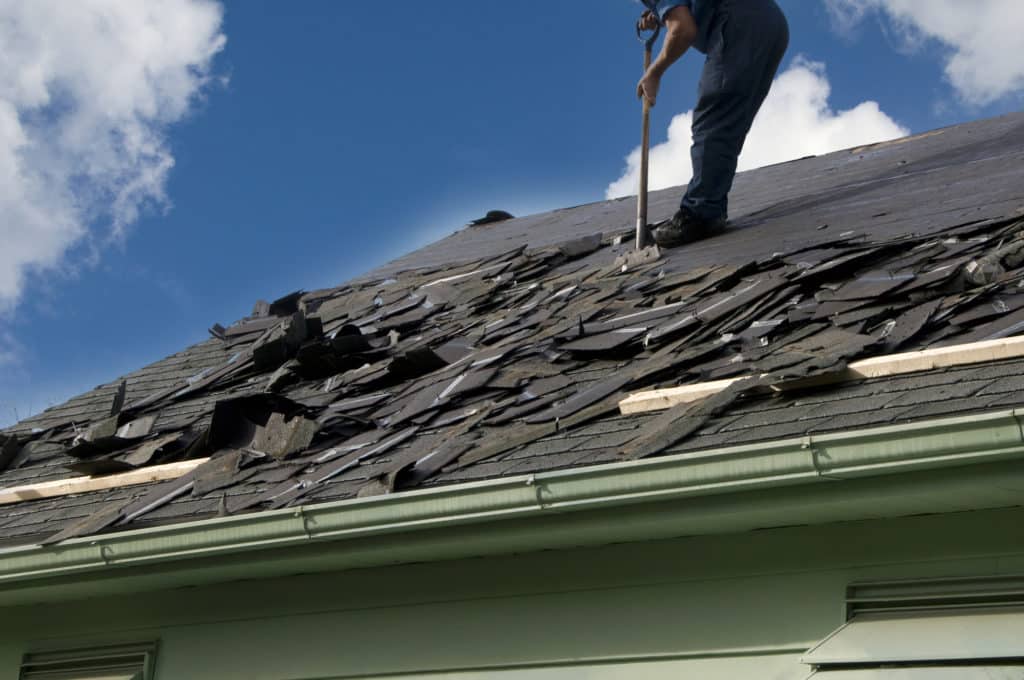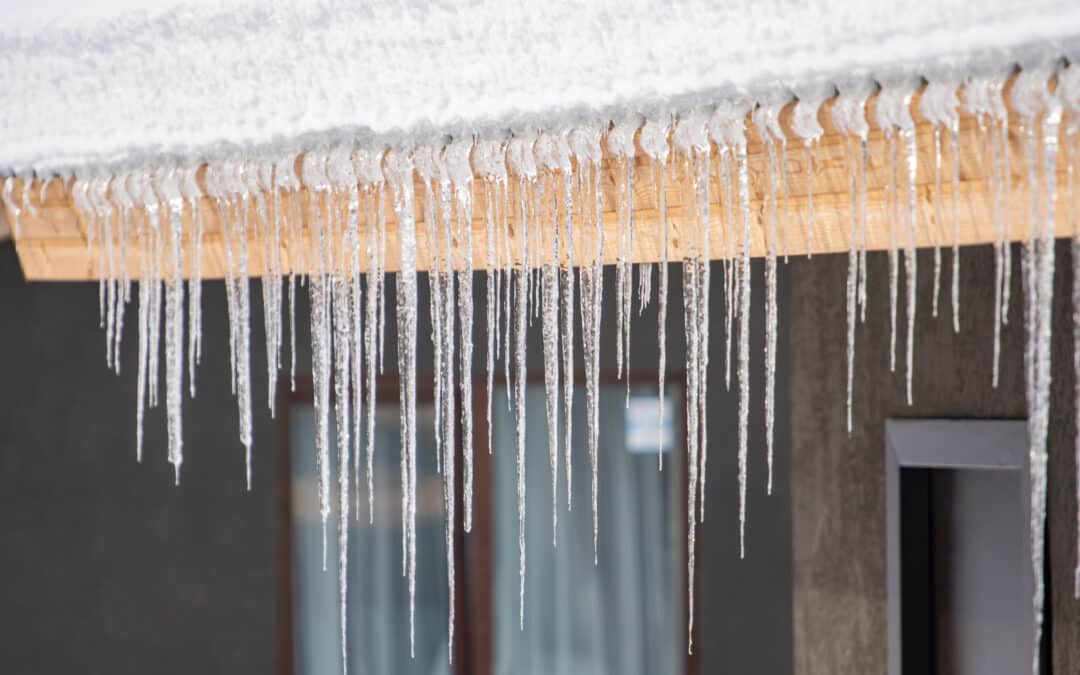Winterizing your home is no easy task. As the days grow shorter and the temperatures drop, it’s time to turn your attention upwards—toward your roof. Every homeowner, DIY enthusiast, and property manager knows the importance of keeping a home warm and dry during the colder months. Your roof serves as the first line of defense against winter’s harsh elements. But is it ready? In this guide, we’ll walk you through the essential steps to winterize your roof, ensuring peace of mind as the snowflakes start to fall. From inspecting your shingles to managing insulation, we’ve got you covered with everything you need to know.
Understanding the Importance of Roof Winterization

snow on roof
Before we get into the nitty-gritty of how to winterize your roof, let’s talk about why it’s so important. The roof over your head does more than just keep the rain out. It’s a critical component of your home’s overall structure and energy efficiency. A well-maintained roof can prevent costly repairs down the line, help regulate indoor temperatures, and protect against leaks that could damage your home’s interior.
Winter brings unique challenges to your roof. Heavy snowfall, ice dams, and fluctuating temperatures can all take a toll. Proper winterization helps mitigate these risks, preserving the integrity of your roof and, by extension, your home. By investing a little time now, you can avoid bigger headaches later.
For homeowners, DIY enthusiasts, and property managers, understanding these risks and how to address them is crucial. With the right knowledge, you can tackle roof maintenance confidently, ensuring that your home remains safe and sound all winter long.
Inspecting Your Roof Before the Cold Hits
The first step in winterizing your roof is a thorough inspection. This process involves checking for any existing damage or potential issues that could worsen when the weather turns. Look for missing or damaged shingles, as these are common entry points for water. If you spot any, replace them promptly to avoid leaks.
Next, examine the flashing around chimneys, vents, and skylights. Flashing is designed to prevent water infiltration, but it can become loose or corroded over time. Ensure that it’s secure and in good condition; otherwise, water might sneak in. Also, check for any signs of mold or mildew, which could indicate moisture problems.
Finally, take a look at the gutters. Make sure they’re clear of leaves and debris, as clogged gutters can lead to water pooling on your roof. This can cause damage and even contribute to ice dam formation. Regular gutter maintenance is key to a healthy roof, especially as winter approaches.
Repairing and Replacing Damaged Shingles

Removing old shingles to prepare a roof
Once you’ve completed your inspection, it’s time to address any issues you’ve identified, starting with the shingles. Damaged shingles are a weak point in your roof’s defense system, allowing water and cold air to seep in. Replacing them is a straightforward task that can save you from more extensive repairs later.
Begin by removing the damaged shingle using a flat pry bar to lift the edges gently. Be careful not to damage the surrounding shingles in the process. Once removed, slide a new shingle into place and secure it with roofing nails. Use asphalt roofing cement to seal the edges, ensuring a watertight fit.
If your roof has extensive damage, consider consulting with a professional like Heaton Roofing Bros. They have the expertise to assess the situation and recommend the best course of action, whether it’s a simple repair or a full replacement. A timely fix can extend the life of your roof and prevent further complications as winter sets in.
Cleaning and Maintaining Your Gutters
Gutters play a vital role in directing water away from your home, preventing potential damage to both the roof and foundation. Before winter arrives, it’s essential to ensure they’re clean and in good working order. This task may seem tedious, but it’s crucial for effective roof winterization.
Start by removing leaves, twigs, and other debris from your gutters. Use a garden trowel or a gutter scoop to make the job easier. Once cleared, flush the gutters with a hose to remove any remaining dirt and ensure the downspouts are unobstructed. This will help prevent water from backing up and freezing, which can lead to ice dams.
While cleaning, check for any signs of rust or damage. If you notice sagging sections or leaks, it’s time for repairs. Tighten loose hangers or brackets to secure the gutters in place, and use a waterproof sealant to patch any leaks. Keeping your gutters in top shape will help protect your roof and home throughout the winter months.
Inspecting and Insulating Attic and Roof Ventilation
Proper attic insulation and ventilation are crucial components of roof winterization. They help regulate temperature, reducing the risk of ice dams and improving energy efficiency. Start by inspecting your attic for any signs of inadequate insulation. If you notice thin or bare spots, it’s time to add more.
Consider using fiberglass batt insulation or blown-in cellulose for even coverage. Both options provide excellent thermal resistance, helping to keep warm air inside your home. Additionally, make sure the insulation is evenly distributed and not blocking any vents.
Speaking of ventilation, check that your roof vents are clear and functioning correctly. Good ventilation allows air to circulate, preventing moisture buildup and reducing the likelihood of ice dams. If necessary, install additional vents or upgrade existing ones to improve airflow. A well-insulated and ventilated attic can make a significant difference in your home’s comfort and energy bills.
Preventing ice dams With Proper Roof Maintenance
Ice dams are a common winter problem that can cause significant damage to your roof and home. They form when warm air from your attic melts snow on the roof, which then refreezes at the eaves, creating a barrier that traps water. Preventing ice dams requires a combination of proper insulation, ventilation, and regular maintenance.
First, ensure your attic is well-insulated to prevent heat from escaping and melting snow on your roof. Next, check that your roof vents are functioning correctly, allowing air to circulate and maintain consistent temperatures. Finally, keep your gutters clean to ensure proper water drainage.
If you’re still concerned about ice dams, consider installing heated cables along the roof’s edge. These cables can melt snow and ice before they have a chance to form a dam. By taking these preventive measures, you can protect your roof and home from the costly damage associated with ice dams.
Trimming Trees and Managing Overhanging Branches
Overhanging tree branches can pose a threat to your roof during winter, especially when weighed down by snow and ice. To protect your roof and home, it’s essential to trim back any branches that are too close. This simple step can prevent damage and reduce the risk of mold growth caused by trapped moisture.
Start by identifying branches that are within six feet of your roof. Use a pole pruner or pruning saw to carefully remove them, working from the outside in. Be mindful of the tree’s health, and avoid cutting too close to the trunk. If you’re unsure about pruning techniques, consider hiring a professional arborist for assistance.
Regular tree maintenance not only protects your roof but also enhances your property’s curb appeal. By managing overhanging branches, you can prevent potential damage and ensure the long-term health of your trees.
Scheduling Regular Roof Inspections With Professionals
Roof Inspection
While DIY maintenance can go a long way in protecting your roof, there’s no substitute for professional expertise. Scheduling regular inspections with a trusted roofing company like Heaton Bros. Roofing. can help identify potential issues before they become costly problems.
A professional inspection typically involves a thorough examination of your roof’s shingles, flashing, and ventilation. The experts can assess the overall condition of your roof and recommend any necessary repairs or maintenance. By staying proactive, you can extend the life of your roof and prevent future headaches.
In addition to regular inspections, consider consulting the professionals for more extensive repairs or replacements. Their experience and knowledge can help ensure your roof is ready to face the challenges of winter, providing you with peace of mind and protection for your home.
Choosing the Right Roofing Materials for Winter Weather
Not all roofing materials are created equal, and some perform better than others in harsh winter conditions. If you’re considering a roof replacement, it’s essential to choose materials that can withstand snow, ice, and fluctuating temperatures.
Metal roofs are an excellent option for winter durability. They’re resistant to snow buildup, lightweight, and reflect sunlight, which can help melt snow and ice. Asphalt shingles are another popular choice, offering affordability and decent performance in colder climates.
When selecting roofing materials, consider your region’s climate and your home’s specific needs. Consulting with a professional like Heaton Roofing Bros. can help you make the best decision for your home, ensuring your roof remains strong and resilient during the winter months.
Get Help Winterizing Your Roof! Contact Heaton Bros. Roofing
Winterizing your roof is an essential task for homeowners and property managers alike. By following these simple steps, you can protect your home from winter’s harsh elements and prevent costly damage. From inspecting your roof to choosing the right materials, each step plays a crucial role in maintaining the integrity of your roof and home.
Remember, a well-maintained roof not only keeps your home warm and dry but also enhances energy efficiency and extends the life of your investment. If you’re unsure about any aspect of roof winterization, consider reaching out to the professionals at Heaton Bros Roofing. for guidance by calling (385) 217-8547. Our expertise can help ensure your home remains safe and comfortable all winter long.


